I do not, as a rule, go looking for a fight on a Sunday morning. Chess, if it must be played at all, should be approached with due caution. My game plan tends to be pretty simple: deploy the pieces onto sensible squares and hope that the coffee kicks in before anything interesting happens. Usually the opponent observes similar norms.
Vincent Keymer, 17, is one of Germany’s brightest talents, and he took me by surprise when we met last weekend in the Bundesliga. The opening moves were familiar, so I was looking forward to some stodgy manoeuvring while digesting my breakfast. But his pawn sacrifice with 14…Nf6 forced me to think. Taking it would grant him a mobile pawn centre and strong pair of bishops, but even on a Sunday morning, declining looked a bit too supine. I gulped my coffee and sank into thought. Half an hour later, I grabbed the pawn, and immediately sacrificed my bishop.
I girded myself by recalling a piece of wisdom I first learned from John Nunn’s book Secrets of Practical Chess. A risky idea, particularly one which demands a sacrifice, is much more appealing when it comes with some sort of safety net. In this case, I judged there was a decent chance that even if my attack did not hit home, it would suffice for a draw by perpetual check. Alas, on this occasion I bailed out too early, when going all in might have won the game.
Luke McShane-Vincent Keymer
Bundesliga, March 2022
1 e4 c5 2 Nf3 d6 3 Bb5+ Nd7 4 d4 cxd4 5 Qxd4 a6 6 Bxd7+ Bxd7 7 Nc3 e5 8 Qd3 Rc8 9 O-O Qc7 10 Rd1 Be6 11 a4 h6 12 Nd2 Standard stuff – the knight plods to e3 to contest the d5 square. Normal is Ng8-f6, Bf8-e7 and O-O, but Keymer played more ambitiously. g6 13 Nf1 f5 14 Ne3 Nf6 A bold idea. Now 15 f3 maintains the centre, but 15…f4 16 Ned5 Nxd5 17 exd5 (else c2 falls) Bxf5 18 Qe2 g5 gives Black an easy kingside attack, angling for g5-g4. 15 exf5 gxf5 16 Nxf5 d5 Passive options, such as 17 Ng3 Bc5 didn’t smell right. Even after 18 Qg6+ Qf7 19 Qxf7 Kxf7 the desirable 20 Be3 runs into 20…d4, while Black has attractive ideas like Nf6-g4 and h6-h5-h4. 17 Bf4! Black’s position looks imposing, but this bishop sacrifice draws attention to the loose pieces on e6 and f6, as well as the uncastled king. exf4 18 Nd4 Hitting the bishop and eyeing up Qd3-g6+. Bg8 I was hoping to see 18…Bg4 when 19 Nxd5! Nxd5 20 Qg6+ Qf7 21 Qxg4 leaves the Black king terribly exposed in the centre. 19 Re1+ Be7 A mistake. 19…Kf7 was better, and then perhaps 20 Re6 Rd8 21 Rxf6+ Kxf6 22 Qf5+ Kg7 23 Qg4+ Kh7 24 Qf5+ is one way the game might end in a draw. 20 Nf5 Bh7 (see diagram). The critical moment. Now if 21 Nxe7 Bxd3 22 Nxd5+ Kf7 23 Nxc7 Bc4! traps the Nc7, so 24 b3 Rxc7 25 bxc4 Rxc4 26 Ne2 Re8 is roughly even. I also wasn’t convinced by 21 Rxe7+ Qxe7 22 Nxe7 Bxd3 23 Nxc8 Bxc2. I had already burned most of my time, and was seduced by the knowledge that my next move would be good enough for a draw. 21 Nxd5 In fact 21 Re6! was very strong. For example, 21…Rf8 22 Rae1 Rf7 23 Rxf6! Rxf6 24 Ng7+ Kd7 25 Qxh7 and White still has a huge attack. Nxd5 22 Qxd5 Bxf5 23 Qxf5 Rd8 There was no decent alternative, e.g. 23…Rf8 24 Rxe7+! Kxe7 25 Re1+ wins quickly. Now Black has the idea of Rd8-d7 followed by Ke8-d8, so it is time to acquiesce to the draw. 24 Qg6+ Kf8 25 Qf5+ Ke8 25…Kg7 26 Qg4+ Bg5 h4! only lands Black in trouble. 26 Qg6+ Kf8 27 Qf5+ Ke8 Draw agreed
Got something to add? Join the discussion and comment below.
Get 10 issues for just $10
Subscribe to The Spectator Australia today for the next 10 magazine issues, plus full online access, for just $10.
You might disagree with half of it, but you’ll enjoy reading all of it. Try your first month for free, then just $2 a week for the remainder of your first year.

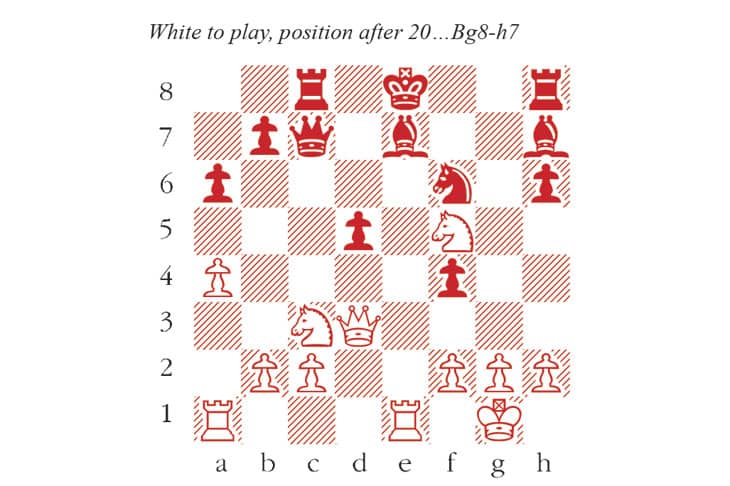
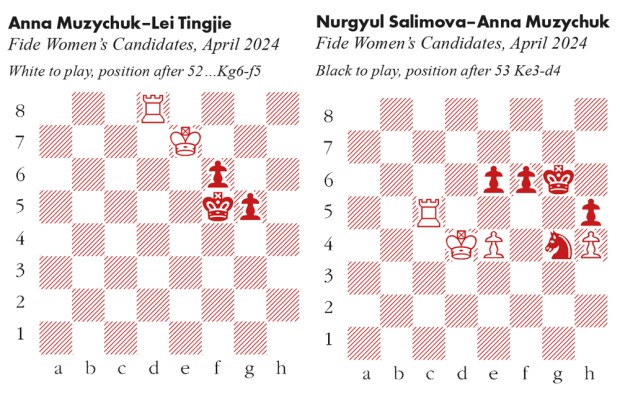
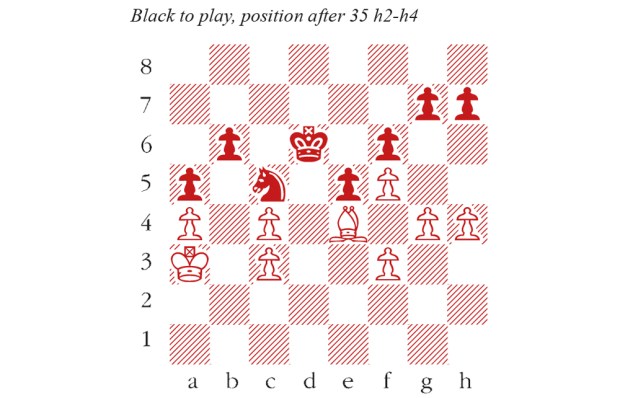
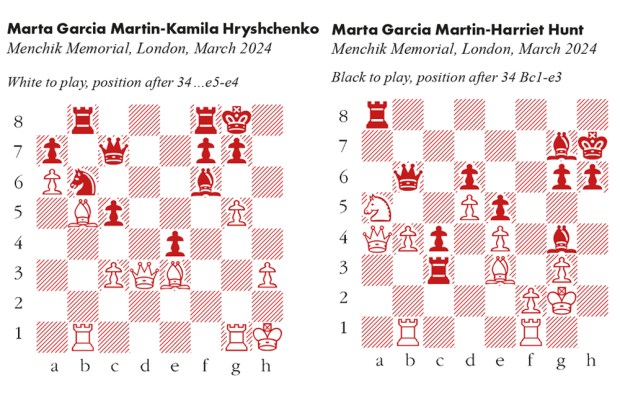

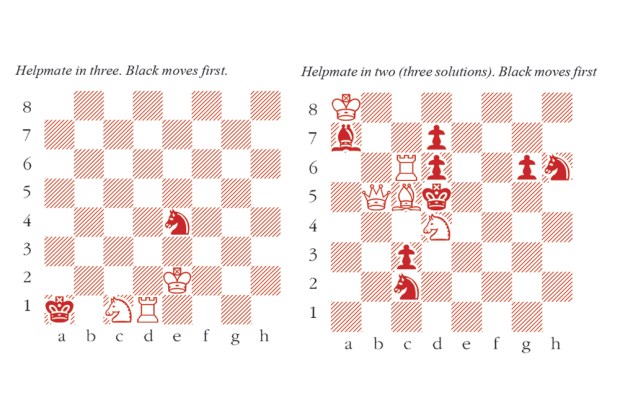
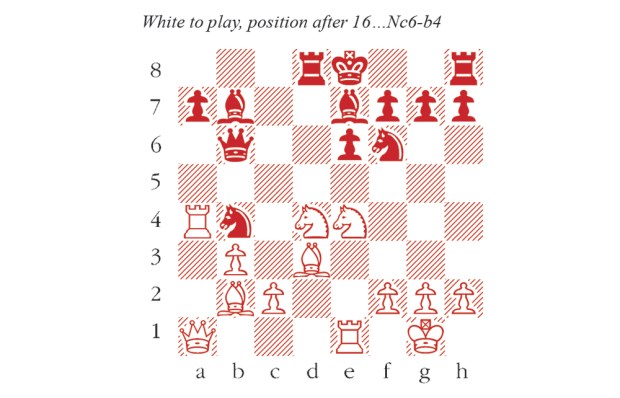






Comments
Don't miss out
Join the conversation with other Spectator Australia readers. Subscribe to leave a comment.
SUBSCRIBEAlready a subscriber? Log in